
Welcome back to Shocktoberfest, and today we’re going to profile those little playthings that most likely ruined many of our childhoods and invaded our dreams. After taking a look at evil toys, you might be glad that you left those action figures in the box.
Like with clowns, numerous phobias exists towards various kinds of toys, but the two that tend to be most common are pediophobia (fear of dolls) and pupaphobia (fear of puppets). The most likely reason for this is again due to the uncanny valley theory. I mentioned the uncanny valley earlier this month in my article about clowns but didn’t really take the time to explain what it is, so for those of you who aren’t familiar with it, here is the basic explanation.
Japanese robotic scientist, Masahiro Mori, explains that as an object begins to move and appear more like a human, we tend to have more positive feelings towards that object since it is beginning to resemble something more familiar to us. However, there is a sharp decline in our fondness for these objects just slightly before it begins to fully resemble a living person, creating a gap between our affinity for cute human-like objects and real people, and this gap is referred to as the uncanny valley.
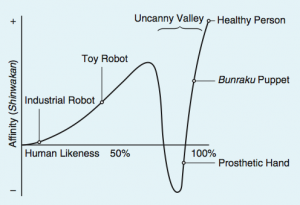
We’ve all experienced this phenomenon whether we’ve realized it or not. Ask yourself if you’ve ever seen a doll or CGI-generated character that looked creepy; why is that? Usually it’s not because they’re designed to be monstrous or intimidating. On the contrary, these things are usually designed to simply look realistic and believable, but since they don’t quite look real enough, there’s something unsettling about them since they don’t look genuine enough to be human, so fear and revulsion are typical reactions. That’s why Bert and Ernie are much more approachable when they look like this…
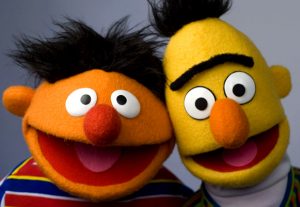
…as opposed to like this.
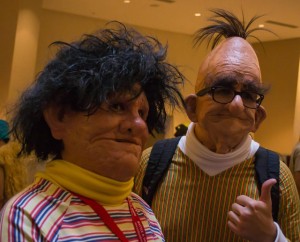
Dolls, puppets and toys also represent something very important when used as tropes in horror stories: innocence. These are the things we play with as children to ignite our imaginations and help us practice how to socially interact with others. Since children’s imaginations tend to be more active, many often make believe that their toys are alive. Notions like these were the inspiration for stories like Pinocchio, The Nutcracker and Toy Story. However, the horror genre has taken this notion and given it a sinister spin by giving these living toys murderous intentions. It’s difficult to say which story from modern media was the first to use this idea, but one of the most famous was an episode of The Twilight Zone from 1963 called “Living Doll.” In this episode, a jealous and petty man named Erich grows hostile towards his stepdaughter, Christie, out of his own insecurity of being infertile. To make up for this, Annabelle, Christie’s mother, buys her a talking doll named Talky Tina who speaks whenever she is wound up by a key in her back. At first, all she says is “My name is Talky Tina and I love you very much,” but after being alone with Erich after one of his outburst, Talky Tina says to him, “My name is Talky Tina and I don’t think I like you.” After continuously being mean to both Christie and the doll, Talky Tina eventually says “My name is Talky Tina and I’m going to kill you.” After failed attempts to destroy the doll, Erich reluctantly returns her to Christie while she sleeps. Later that night, he is woken up by a muffled noise, and as he walks downstairs to see what was causing the noise, he trips over Tina who was lying on one of the steps and tumbles down so violently that he dies from his injuries. Upon finding Erich’s body, Annabelle picks up the doll, and Tina says “My name is Talky Tina…and you’d better be nice to me!”

If Talky Tina was the evil toy that informed the trope’s premise, Fats from the 1978 horror film Magic set the bar for its aesthetic. Magic is the story of a ventriloquist magician whose dummy is a foul-mouthed little bastard named Fats who is at first believed to be an evil alternate personality of his owner but is later revealed to be more than he seems. The movie was positively received by critics, but its real legacy comes from its trailer. Television channels pulled the trailer from broadcasting because numerous calls from parents complaining that this thirty-second clip was giving their children nightmares. If you haven’t seen it for yourselves, watch it in the link below.
In 1988, a new film that would go on to create a series lasting 25 years was released that took inspiration from its predecessors and created a monster that the subgenre is best known for: Child’s Play.
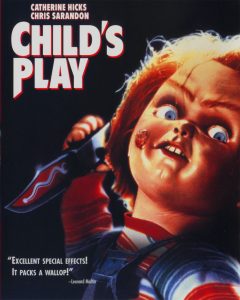
Like Talky Tina, Chucky also was a talking doll who would only speak his true feelings when he was alone with his would-be victim, and like Fats, not only did he actually get up and move to kill people, but even the trailers with him in them were enough to give children pants-wetting scares. Chucky has also seemed to borrow traits from characters like Freddy Krueger who would butcher their victims with a sense of glee and always be on the beat with a quick one liner to put a nice button on the kill.
Chucky’s popularity opened doors for other filmmakers to include evil toys as monsters for their movies. While he never actually commits any of the kills—nor is he really alive—Jigsaw from the Saw franchise often shows his victims videos of his talking puppet named Billy to explain the trap they’re in and offer clues on how to escape with warnings that the price of their lives is going to come at a great expense.

In even more recent years, Saw director James Wan found success in 2013 with yet another film involving an evil doll that has already spawned a sequel in 2014: The Conjuring. While the doll named Annabelle [Hmm, where else have we heard that name today?] only makes a brief appearance in the film, she was based on an actual account of a Raggedy Ann doll that its owners claimed was possessed. The Conjuring mostly focuses on the accounts of paranormal investigators Ed and Lorraine Warren, but audiences were so captivated and frightened by Annabelle that Warner Bros. Pictures gave her a spin-off prequel that gave her an origin story.
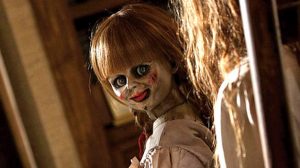
As we grow up, many of us leave our toys behind as a mean of growing up and taking on new responsibilities, so the thought of our toys coming back to kill us not only is terrorizing in and of itself but also pulls us back into the same state of fear we found ourselves in as children. Only this time it isn’t part of our imagination anymore, and these toys aren’t in the mood to play nice.
















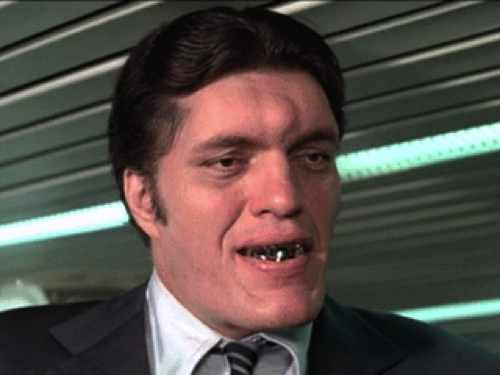
well, the human bert/ernie combo is probably going to give me nightmares for, well, ever. so thanks for that. haha.